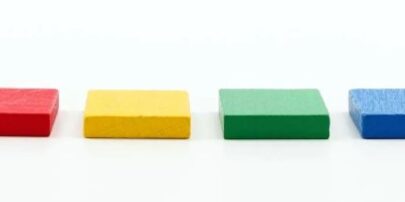Game pieces are physical representations of mechanics and dynamics present in a game. In tabletop games, these are the physical pieces that players interact with throughout the game. They typically serve multiple purposes, including: representing information; positions; and relationships in the game. It includes primary pieces, common pieces, identification pieces, randomization pieces, and measurement pieces. This article will focus on Identification Game Pieces in tabletop games. Cubes, Chits, Meeples/Miniatures/Standees/Pawns are all Identification Game Pieces.
What is Identification Game Pieces?
Identification pieces are primarily used to identify states or to demonstrate and display information about a player. These pieces typically represent a resource or group of resources in the game. They can also represent a “player” . This is the physical representation of them as a player in the tabletop world.
Cubes: One of Identification Game Pieces
Wooden component Cubes are probably the darling of modern Euro games. No other piece is more common in different contemporary games than the colored cube. Their potential for mass production combined with the ability to display and demonstrate many things (such as resources, status, player status, and board status) makes them incredibly versatile. However, in most cases, they are very small components and are often limited in terms of information representation compared to chits. Some of the most common uses of cubes are to keep track of the status of different tracks, such as in Hyperborea.
Chits: One of Identification Game Pieces
Chits can also be classified as smaller tiles. They can provide more information than cubes because they can print information on a flat surface. As a result, chits are often used in games where more information needs to be shared or represented in chits than can be accurately conveyed with cubes. Wreck Raiders uses chits to describe different types of treasure (colors) and the kind of treasure (logo) on each chit.
Meeples/ Miniatures/ Standees/ Pawns: One of Identification Game Pieces
Meeples, miniatures, standees, and pawns also represent information; but usually in relation to the position of other elements. Meeples and pawns are one of the most annotated representations of players in games. These tabletop world avatars are one of the simplest ways to represent a player’s position. Miniatures take meeples a step further by providing additional detail and fidelity to the player’s character. Standees are able to provide more information at the cost of abstracting the player from the game. This is because standees are two-dimensional and appear differently depending on the angle from which the player is viewing them.













